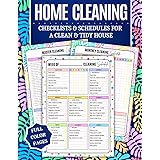Elevate Your Kitchen Organization: Expert DIY Strategies for Culinary Efficiency
Achieving optimal kitchen organization is paramount for seamless culinary operations. The accompanying video offers practical, ingenious DIY solutions for common kitchen challenges. This article expands upon those foundational ideas, delving into the strategic implications and expert perspectives behind effective kitchen storage and workflow optimization.
Optimizing Culinary Workflows with Spice Management Systems
An organized spice collection is not merely aesthetic; it is a keystone of culinary efficiency. The magnetic spice jar concept, as demonstrated, transcends simple storage. It redefines ingredient accessibility within the cooking sphere. This method integrates visual merchandising principles directly into your kitchen ergonomics.
Furthermore, magnetic storage systems foster rapid ingredient identification. Locating specific spices becomes instantaneous. This minimizes search time during meal preparation. Consequently, the chef’s workflow remains uninterrupted and fluid. The video highlights finding these innovative tin containers for approximately $1.25 each. This represents a negligible capital outlay for significant operational gains.
Consider the strategic placement of these magnetic modules. Proximity to the cooking zone is crucial. This ensures a true “mise en place” philosophy. Your spice inventory becomes a dynamic, visible asset. It proactively prevents duplicate purchases and ensures ingredient freshness.
Strategic Implementations: The Versatility of File Holders for Kitchen Storage
The humble file holder emerges as a versatile piece of kitchen apparatus. Its application extends far beyond office document management. This tool can resolve several persistent storage conundrums. These solutions embody principles of lean manufacturing in a domestic setting.
Firstly, file holders provide optimal vertical storage for cutting boards. This elevation promotes air circulation. Such aeration is critical in mitigating bacterial proliferation. It prevents moisture retention, a common precursor to unsanitary conditions. Secondly, these holders expertly contain pot and pan lids. Lid clutter often disrupts cabinet order. A dedicated vertical slot for each lid simplifies access. This minimizes the “domino effect” of shifting cookware. The third innovative application targets Tupperware lids. These items are notorious for creating organizational chaos. A file holder transforms them into a neatly categorized stack. This approach streamlines container retrieval and promotes rapid inventory assessment. The video notes these pragmatic organizers typically cost around $5. This investment yields substantial returns in spatial utilization and decluttering. Their structural rigidity provides dependable containment for varied kitchen implements.
Advanced Inventory Control: The Food Organization Board as a Culinary Command Center
Food waste represents a significant economic and environmental burden. The custom-built food organization board acts as a sophisticated inventory management system. It mitigates the common issue of forgotten perishables. This system converts tacit knowledge into explicit, visible data.
Moreover, this visual dashboard facilitates proactive meal planning. Users can correlate available ingredients with potential meal options. This foresight reduces impromptu grocery runs. It also optimizes expenditure on consumables. The board’s modular design allows for customized categorical segmentation. Categories like “Fresh in Fridge,” “Needs to Buy,” and “Meal Ideas” provide actionable intelligence. The video suggests a $10 poster board frame as the core component. This low-cost framework empowers high-level culinary logistics. The use of strong magnets ensures robust attachment to the refrigerator’s ferromagnetic surface. The dry-erase functionality permits dynamic, real-time updates. This system synchronizes household food consumption, minimizing spoilage.
Engineered Solutions for Common Kitchen Annoyances: The Velcro Towel Hack
The issue of falling kitchen towels, while seemingly minor, represents a friction point in kitchen ergonomics. The Velcro adhesion technique offers a robust, low-cost engineering solution. This simple modification enhances the functional longevity of kitchen textiles.
Furthermore, the use of fabric-specific glue ensures durability and washability. The Velcro strips create a secure, temporary bond. This prevents towels from slipping onto the floor. Such stability contributes to a cleaner, more hygienic kitchen environment. It also reduces repetitive bending or retrieval actions. This small enhancement improves overall user experience. It reflects a meticulous attention to detail in household management. The solution embodies functional simplicity and resilient utility. It addresses a persistent, albeit minor, operational inefficiency.
Crafting a Bespoke Tea Sanctuary: Aesthetic and Functional Tea Organization
The curation of a tea collection demands both aesthetic consideration and functional design. The mason jar organization system provides an exemplary model. It harmonizes visual appeal with practical accessibility. This approach respects the distinct properties of various tea types.
Transferring teas to airtight mason jars offers superior preservation. It safeguards delicate aromatics and essential oils. This prevents flavor degradation and cross-contamination among different blends. The use of chalk labels introduces a dynamic labeling schema. Labels can be modified or updated with ease. This adaptability accommodates changes in tea preference or inventory. The video highlights a total cost of approximately $12 for this entire DIY project. This makes it an economically astute choice. The “upcycling” of the mason jar box itself into a painted, labeled container demonstrates resourcefulness. Priming the cardboard prior to painting is a key technique for achieving a professional finish. Arranging teas by caffeine level, as mentioned, is a prime example of user-centric design. This allows for rapid selection based on desired physiological effect. The entire setup functions as a dedicated tea bar. It elevates the daily tea ritual. It ensures visible inventory and simplified retrieval of desired blends. The final system exudes both handcrafted charm and sophisticated utility. It exemplifies superior kitchen organization practices.







